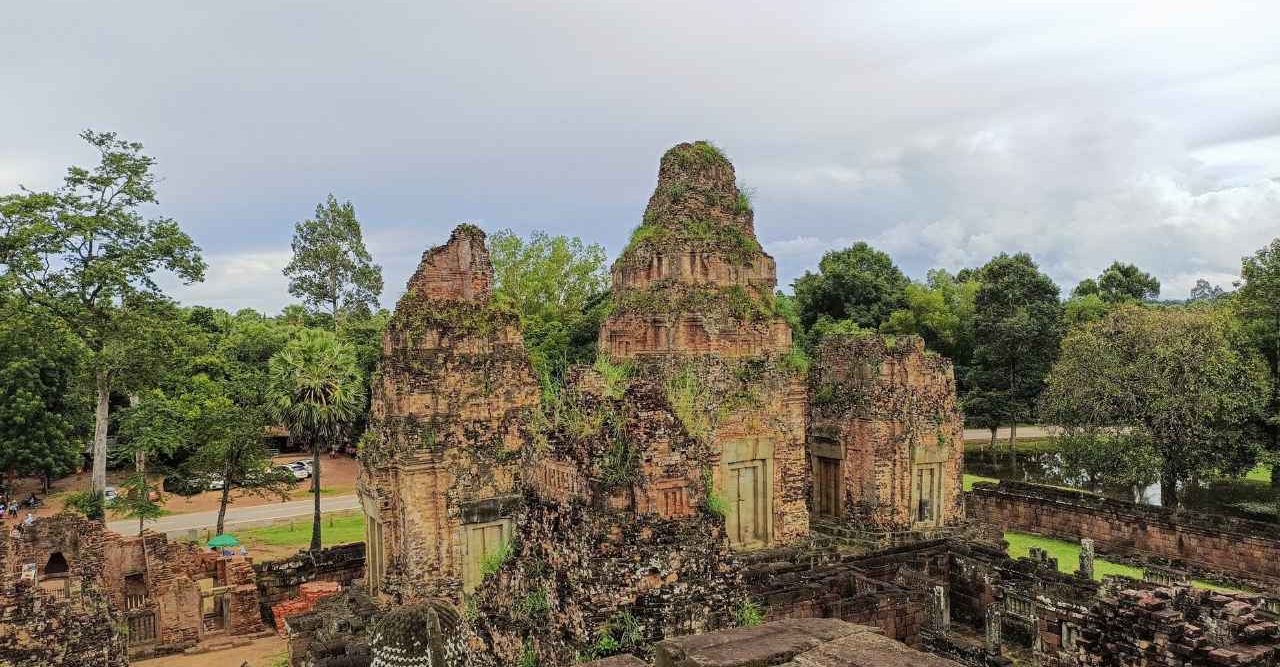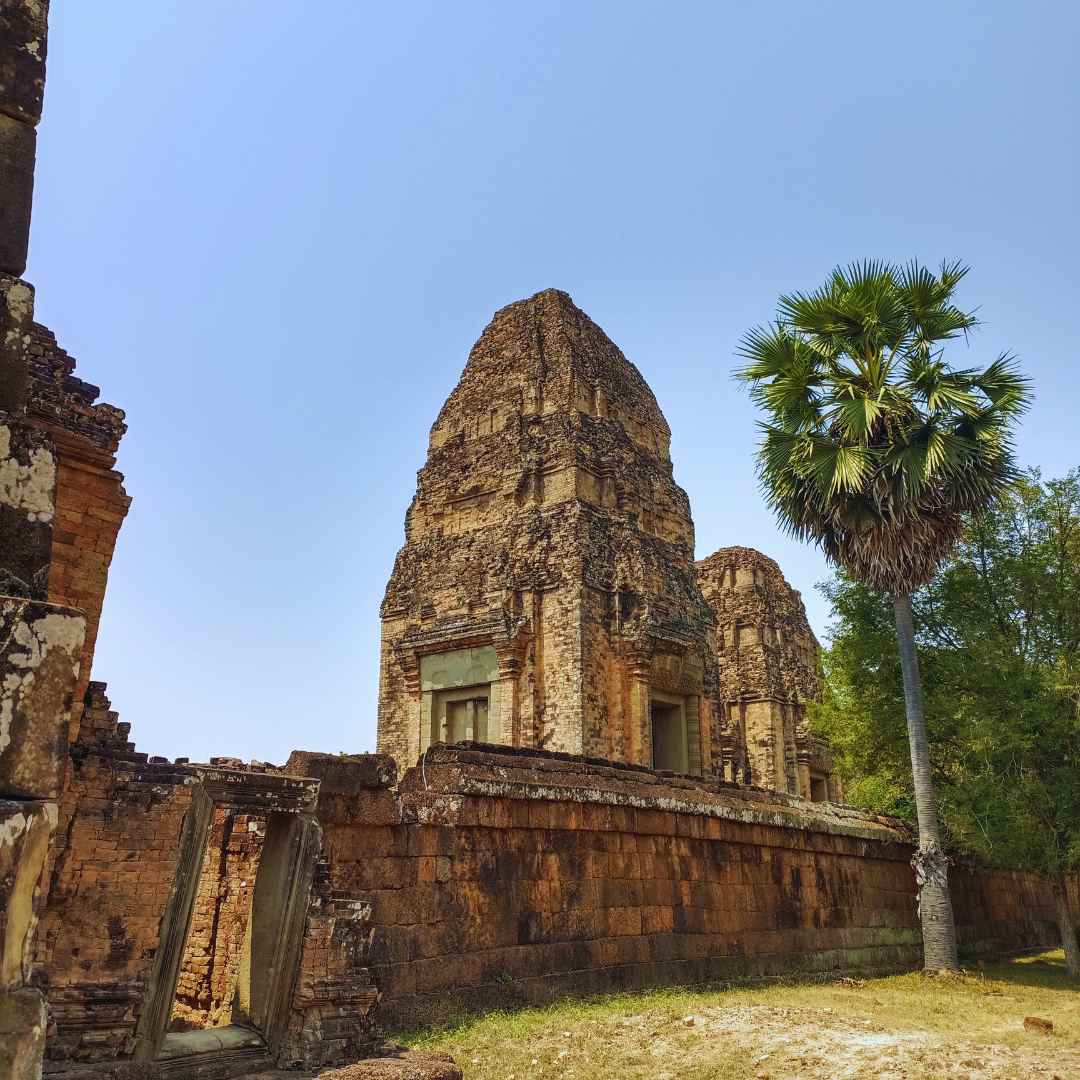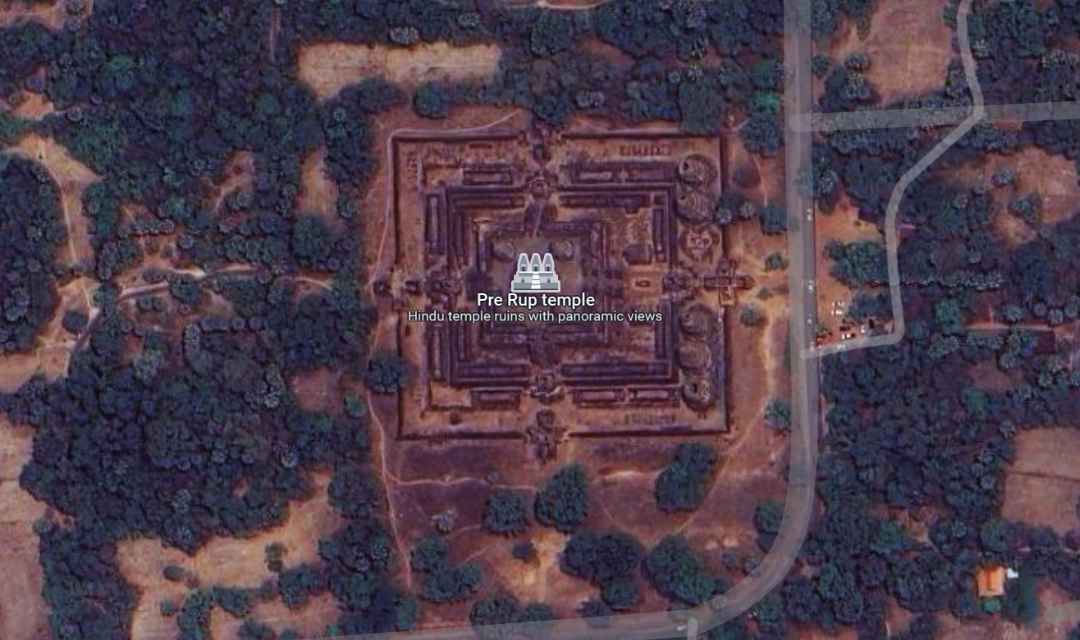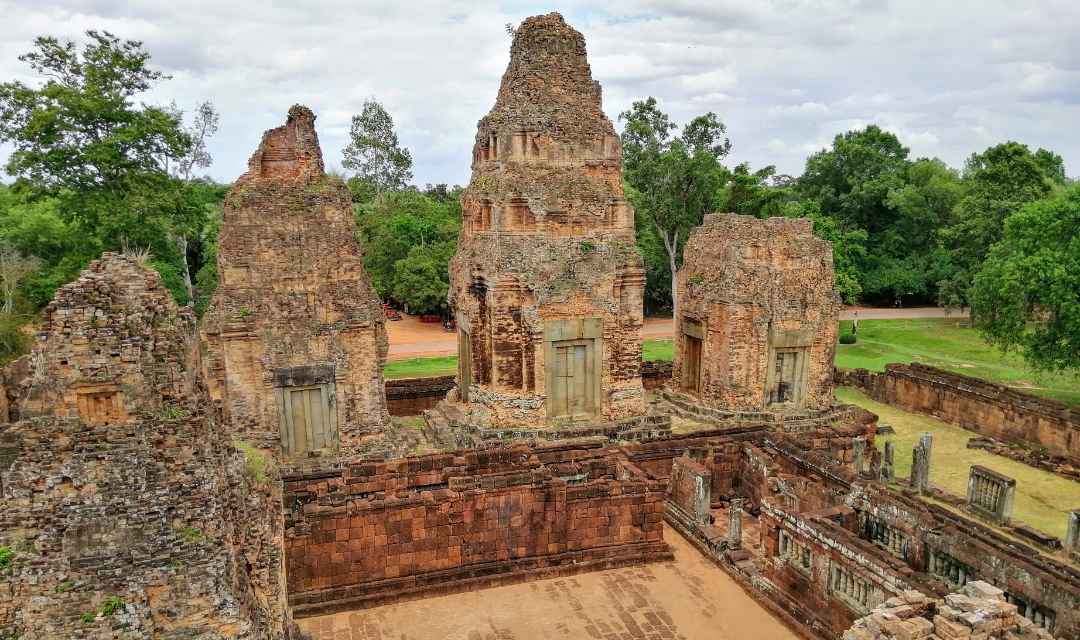A Deep Dive into the Wonders of Pre Rup Temple
Ever wondered about the mysteries of the ancient world? Well, let’s take a virtual journey to one of the most captivating historical sites in Cambodia – the Pre Rup Temple. This architectural marvel is not just a pile of old bricks; it’s a testament to the grandeur of the Angkorian era and a symbol of Cambodian culture. Intrigued? Let’s dive in!
A Brief History of Pre Rup Temple
Imagine stepping back in time to the reign of King Rajendravarman II. It’s the 10th century, and the king has just commissioned a new state temple – Pre Rup. The temple, built in 961 AD, is a masterpiece of the Khmer architectural style. But why the name “Pre Rup”? Well, it translates to “turn the body”, hinting at its use in ancient funerary rituals. Spooky, right?
The Importance of Pre Rup Temple in Cambodian Culture
Pre Rup Temple isn’t just a historical monument; it’s a cultural icon. It’s a place where the past meets the present, where ancient rituals echo in the corridors, and where every stone tells a story. It’s a symbol of Cambodia’s rich cultural heritage and a source of national pride.
Key Takeaways:
- Pre Rup Temple’s unique brick and laterite construction is a testament to the ingenuity of the Khmer craftsmen.
- The temple’s design is steeped in symbolism, offering insights into Hindu cosmology and Cambodian culture.
- Pre Rup Temple is renowned for its spectacular sunset views, offering a breathtaking natural spectacle.
- The temple holds significant religious importance, serving as a stage for grand religious ceremonies in the past.
- Conservation efforts by local and international organizations play a crucial role in preserving this architectural marvel.
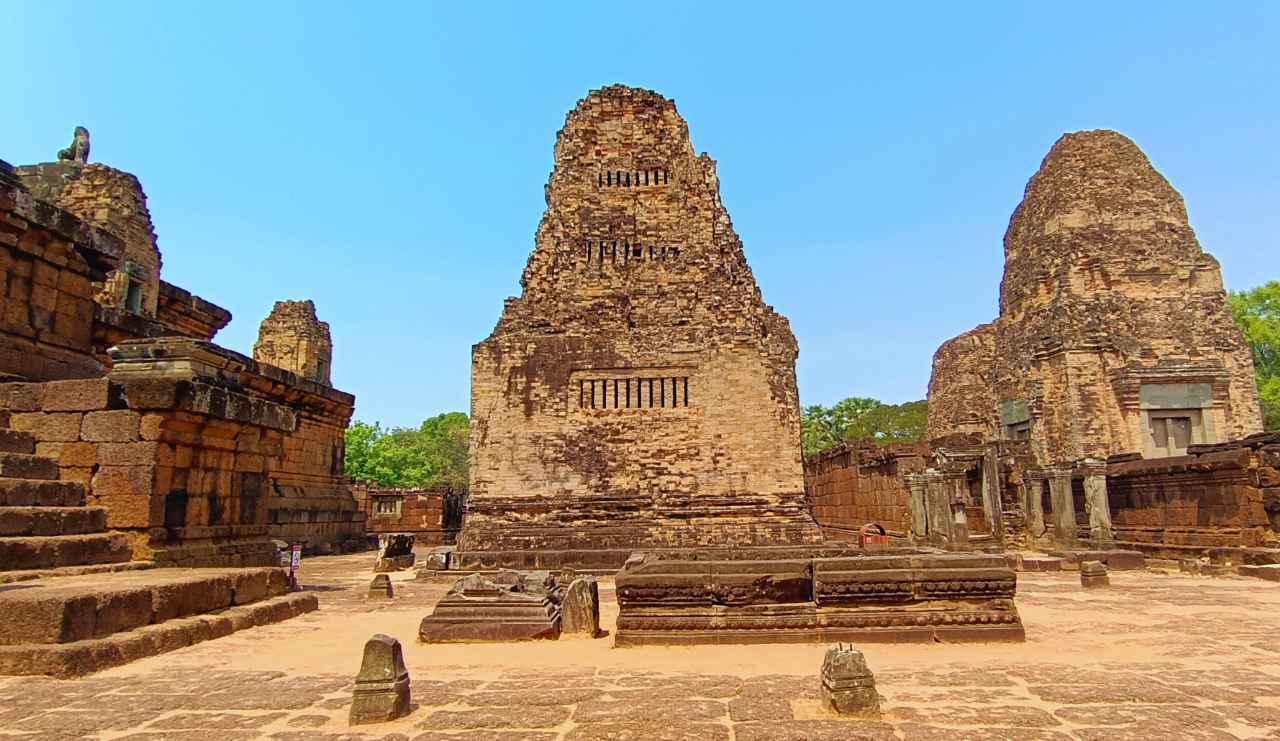
Detailed History of Pre Rup Temple
The Era of King Rajendravarman II
King Rajendravarman II wasn’t just a ruler; he was a visionary. His reign marked a period of architectural innovation and cultural renaissance in Cambodia. Pre Rup Temple is a testament to his legacy.
The Significance of the Temple’s Name
“Pre Rup” might sound like a catchy name for a temple, but it has a deeper meaning. It’s believed to refer to the traditional cremation rituals, where the body’s outline is rotated during the ceremony.
The Architectural Style and Influence
Pre Rup Temple is a classic example of the Khmer architectural style, characterized by its towering brick and laterite construction. The temple’s intricate carvings and sculptures are a sight to behold, reflecting the artistic prowess of the Khmer craftsmen.
Now, wouldn’t it be amazing to witness the sunrise from the top of this ancient temple? Well, you’re in luck! My Siem Reap Tours offers a special sunrise tour that lets you experience this magical moment.
Or perhaps you’re more of a sunset person?
We’ve got you covered with their Phnom Bok sunset tour.
And for the photography enthusiasts out there, the Angkor Wat mix temples photo tour is a must!
For a more comprehensive experience, consider the 1-day Angkor Wat grand loop private tour. And if you’re looking for a unique itinerary, check out the Pre Rup sunrise with Banteay Srei tour offered by Angkor Tours.
So, ready to embark on a journey through time and witness the grandeur of the Pre Rup Temple?
Architectural Marvel of Pre Rup Temple
Ever looked at a building and thought, “Wow, how did they do that?” That’s the kind of awe the Pre Rup Temple inspires. Let’s take a closer look at this architectural wonder.
Description of the Pre Rup Temple’s Structure
The Pre Rup Temple is a classic example of Khmer architecture. It’s a three-tiered pyramid with five sanctuary towers at the top. Picture a grand staircase leading you up to the central tower, with four smaller towers surrounding it. It’s like a stairway to heaven, right here on earth.
The Unique Brick and Laterite Construction
What makes the Pre Rup Temple stand out is its unique construction. The temple is built primarily from brick and laterite, a type of soil rich in iron and aluminum. This combination gives the temple its distinctive reddish-brown color. It’s like the temple is glowing with the warmth of the Cambodian sun.
The Intricate Carvings and Sculptures
The Pre Rup Temple is a feast for the eyes. The walls are adorned with intricate carvings and sculptures, each telling a story from Hindu mythology. From the epic battles of the Ramayana to the divine dance of Shiva, the temple is a canvas of ancient tales.
| Features of Pre Rup Temple | Benefits of Visiting Pre Rup Temple |
|---|---|
| Unique Brick and Laterite Construction | Experience the ingenuity of ancient Khmer craftsmanship |
| Spectacular Sunset Views | Witness a breathtaking natural spectacle |
| Rich Symbolism | Gain insights into Hindu cosmology and Cambodian culture |
| Intricate Carvings and Sculptures | Admire the artistic prowess of ancient artisans |
| Representation of the Hindu Universe | Understand the spiritual significance of the temple’s design |
The Religious Significance of Pre Rup Temple
The Pre Rup Temple isn’t just an architectural marvel; it’s a spiritual beacon. Let’s delve into the religious significance of this ancient temple.
The Temple as a Representation of the Hindu Universe
In Hindu cosmology, the universe is often depicted as a cosmic mountain, and the Pre Rup Temple is a reflection of this concept. The central tower represents Mount Meru, the abode of the gods, while the surrounding towers symbolize the four cardinal points. It’s like stepping into a 3D model of the Hindu universe.
The Symbolism of the Pre Rup Temple’s Design
Every aspect of the Pre Rup Temple is steeped in symbolism. The five towers represent the five peaks of Mount Meru, while the moat symbolizes the cosmic ocean. Even the east-west orientation of the temple has a spiritual significance, representing the cycle of life and death.
The Role of the Temple in Religious Ceremonies
The Pre Rup Temple was more than just a place of worship; it was a stage for grand religious ceremonies. The temple’s design facilitated elaborate rituals, from royal coronations to sacred dances. It’s like the Broadway of the ancient world.
Ready to experience the magic of the Pre Rup Temple for yourself? My Siem Reap Tours offers a range of tours that let you explore this architectural marvel in all its glory. So, what are you waiting for? Embark on a journey through time and witness the grandeur of the Pre Rup Temple.
The Pre Rup Temple Experience
Pre Rup Temple isn’t just a place to visit; it’s an experience to savor. From the journey to the temple to the breathtaking view from the top, every moment is a memory in the making.
The Journey to the Temple
The journey to Pre Rup Temple is like a trip back in time. The timeless beauty of the ancient ruins takes its place as you travel through the lush Cambodian countryside. And then, rising majestically against the skyline, you see it – the Pre Rup Temple, a testament to the grandeur of the Angkorian era.
The Best Time to Visit Pre Rup Temple
So, when’s the best time to visit Pre Rup Temple? Well, if you’re a fan of sunsets, you’re in for a treat. The temple is renowned for its spectacular sunset views, painting the sky in hues of orange and red. It’s like watching a live painting unfold before your eyes.
The View from the Top of the Temple
Pre Rup Temple offers a view that’s worth every step of the climb. From the top of the temple, you get a panoramic view of the surrounding landscape, dotted with ancient ruins and lush greenery. It’s like standing on the shoulders of giants, looking out over a world frozen in time.
Conservation Efforts
Preserving Pre Rup Temple is no easy task. It’s a delicate balance of honoring the past and embracing the future.
The Challenges in Preserving the Temple
The biggest challenge in preserving Pre Rup Temple is the ravages of time and nature. The temple’s brick and laterite construction, while unique, is susceptible to weathering. It’s like trying to hold back the tide – a constant battle against the inevitable.
The Role of Local and International Organizations
But all is not lost. Local and international organizations are playing a crucial role in preserving Pre Rup Temple. From restoration projects to awareness campaigns, these organizations are the unsung heroes in the fight to preserve Cambodia’s cultural heritage. It’s a testament to the power of collective action – proof that when we stand together, we can make a difference.
Pre Rup Temple – Frequently Asked Questions
Got questions about Pre Rup Temple? You’re not alone. Here are some of the most frequently asked questions about this architectural marvel.
Why is Pre Rup Temple built with brick and laterite?
Pre Rup Temple’s unique brick and laterite construction is a testament to the ingenuity of the Khmer craftsmen. Brick was chosen for its durability and ease of carving, while laterite was used for its abundance and resistance to weathering. It’s like building a sandcastle with the perfect mix of sand and water – a balance of strength and flexibility.
What is the best time to visit Pre Rup Temple?
The best time to visit Pre Rup Temple is at sunset. As the sun dips below the horizon, the temple is bathed in a warm, golden glow. It’s like watching the temple come alive, its ancient stones telling tales of a bygone era.
How long does it take to explore Pre Rup Temple?
The time it takes to explore Pre Rup Temple can vary depending on the visitor’s pace and interest. It takes about 50 minutes to an hour to explore the temple. Visitors can climb to the top of the temple to enjoy the views of the surrounding area, which can take some extra time.
However, visitors who are interested in the temple’s history and architecture may spend more time exploring and learning about the temple.
It is recommended to visit the temple early in the morning or late in the afternoon to avoid the crowds and the heat, and to take advantage of the good lighting for photography.
What is the height of Pre Rup Temple?
The height of Pre Rup Temple is not explicitly mentioned. However, the temple is described as a temple mountain with steep, knee-high steps, and a pyramid-shaped temple consisting of three tiers, reaching 12 meters in height.
Additionally, the final squared pyramid of the temple measures 50 meters at its base and rises in three steep tiers a dozen meters in height to a 35-meter square platform at the summit.
Visitors can climb to the top of the temple to enjoy the views of the surrounding area.
What is the significance of the temple’s design?
The design of Pre Rup Temple is steeped in symbolism. From the five towers representing the peaks of Mount Meru to the east-west orientation symbolizing the cycle of life and death, every aspect of the temple’s design has a deeper meaning. It’s like a 3D puzzle, waiting to be deciphered.
Pre Rup Temple is more than just a historical monument; it’s a window into Cambodia’s past. From its unique construction to its religious significance, the temple offers a glimpse into the grandeur of the Angkorian era and the rich tapestry of Cambodian culture.
The enduring allure of Pre Rup Temple lies in its ability to transport us back in time. As we walk through its ancient corridors and climb its towering steps, we are not just visitors, but time travelers, experiencing a slice of history firsthand.
So, whether you’re a history buff, a culture enthusiast, or a curious traveler, Pre Rup Temple is a must-visit. After all, to understand Cambodia’s present, we must journey through its past. And what better place to start than the Pre Rup Temple?
